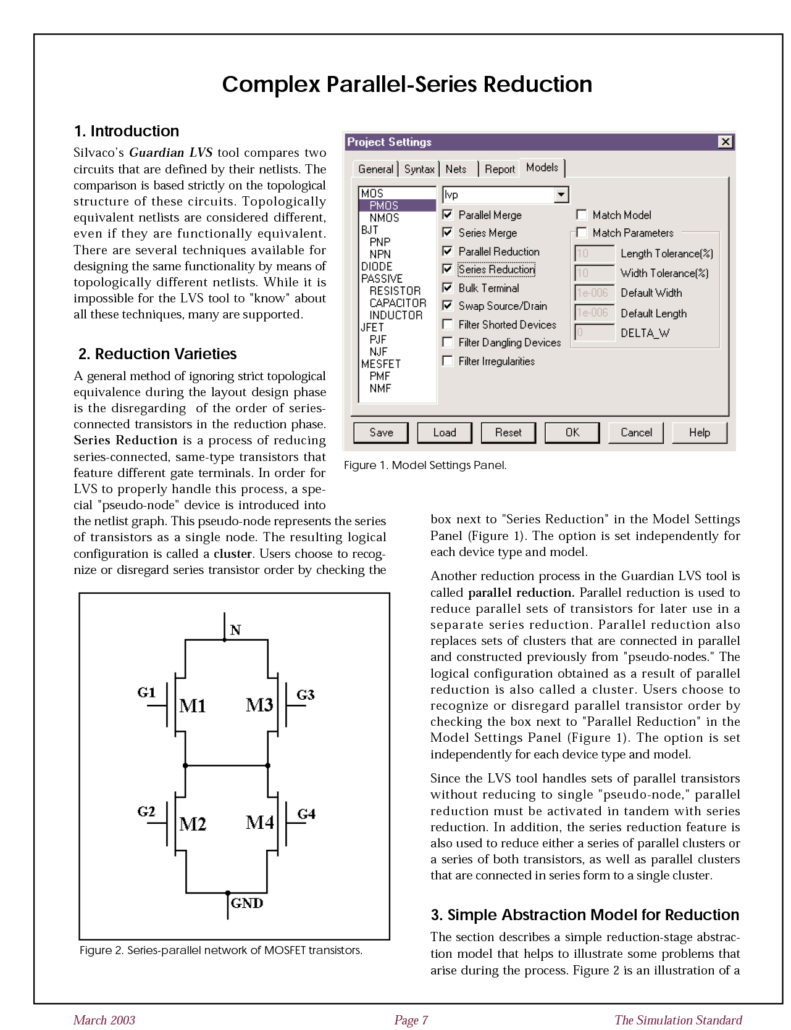Simulation Standard Technical Journal
A Journal for Process and Device Engineers

BSIM3v3 Model Verilog-A Implementation
Berkeley University BSIM3v3 model is the industry-standard, physics-based, deep-submicron MOSFET model for digital and analog circuit designs. This makes BSIM3v3 model a good candidate for implementation in Verilog-A HDL for study purpose or customized model use.

New Device Model Card Approach
Normally a single active device model is extracted to cover a range of device geometries and temperature. Sometimes this single scalable model is not sufficient to describe all the changes in output characteristics over the range of geometry and temperature required. The total range of geometry and temperature is then broken up into regions and a model produced for each of these sub-sets of devices. This is the basis of a binned model and can lead to discontinuities at the bin boundaries as the model card is changed. To get round this problem SmartSpice has introduced a new functionality to allow the user to go back towards a single scalable model card via the use of a function rather than a single parameter value.

SmartSpice Tips: Memory Usage, .MODIF & .ALTER, Non-convergence
When you run a long simulation time analysis the evaluated time points are normally all held in memory until the end time is reached. All the data is then written out to the output rawfile. This means a large amount of system memory can be used up and also has to be tracked. If in the input deck the line “.OPTIONS RAWPTS=300 POST” is included then as soon as the maximum number of points is reached given by “RAWPTS=300” then all the vector data is saved to the raw data output file and the memory is free to be re-used. In this way the output rawfile is incrementally increased in size every time this limit is reached. The memory required by the simulation run is therefore reduced, and with less memory to manage, the simulation is run faster. This is particularly useful on the PC platform where some of the memory is required for the operating system and RAM size is less than 1GB.

Guardian-Net Netlist Extractor: An Example of Specific Device Extraction Using XI-Scripts
Guardian LVS from Silvaco is an efficient, reliable, and diverse package that brings the benefit of high-speed verification to PC-based test environments. Guardian netlist extractor, included with the Guardian suite, is a dynamic module that supports the high-speed extraction of a variety of devices, including MOS transistors, resistors, capacitors, and other standard devices.

Complex Parallel-Series Reduction
Silvaco’s Guardian LVS tool compares two circuits that are defined by their netlists. The comparison is based strictly on the topological structure of these circuits. Topologically equivalent netlists are considered different, even if they are functionally equivalent. There are several techniques available for designing the same functionality by means of topologically different netlists. While it is impossible for the LVS tool to "know" about all these techniques, many are supported.

Expert Editor Settings and Layer Cleaning
I generated some layers in Expert by DRC script run, and after that, derived layers can not be cleaned by "Tools\Derived Layers\Clean Derived Layers\ Whole Project", otherwise, derived layers generated by Maverick can be cleaned this way. How can I clean them all?

